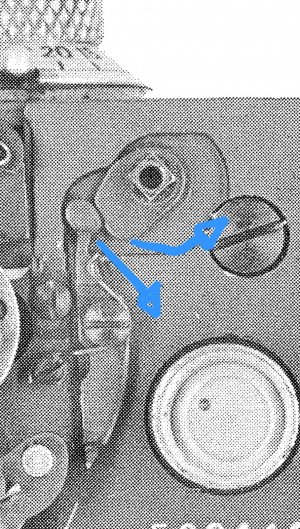Jeph
Newbie
I recently purchased a Leica IIIf BD from a local camera store and was hoping to get some advice on an issue I’m having.
A little background: I was told the camera had been CLA’d before being put up for sale. The listed price was $380, but the salesman offered it for $300 since it had been sitting in stock since early this year.
After getting home and reading through the manual, I turned the reversing lever from A to R, and then back to A. After that, the shutter stopped firing on the first press. I moved the lever a few times after that, and it only got worse. With the reversing lever pushed all the way against the post in the A position, the shutter won’t fire at all. If I move it slightly upward (around the 3 o’clock position), the shutter will eventually fire—but only after pressing the release several times. I also noticed that the curtains move at the same speed regardless of the shutter speed setting. From what I’ve read, this sounds like a problem with the reverse interlock cam not returning fully when set back to A, which may be causing both the shutter speed and release issues. There seems to be a “sweet spot” where I can position the lever so that the curtains move at the correct speeds, but the release still needs multiple presses to fire.
I was offered a full refund, or a partial refund if I decided to keep the camera. I ultimately planned to return it because I wasn’t sure about the partial refund amount and potential repair costs. The store then offered a $200 refund, selling it to me as a parts camera, so I decided to keep it.
I’m hoping someone here has a better understanding of what’s happening or might know if I’ve done something wrong to cause it.


A little background: I was told the camera had been CLA’d before being put up for sale. The listed price was $380, but the salesman offered it for $300 since it had been sitting in stock since early this year.
After getting home and reading through the manual, I turned the reversing lever from A to R, and then back to A. After that, the shutter stopped firing on the first press. I moved the lever a few times after that, and it only got worse. With the reversing lever pushed all the way against the post in the A position, the shutter won’t fire at all. If I move it slightly upward (around the 3 o’clock position), the shutter will eventually fire—but only after pressing the release several times. I also noticed that the curtains move at the same speed regardless of the shutter speed setting. From what I’ve read, this sounds like a problem with the reverse interlock cam not returning fully when set back to A, which may be causing both the shutter speed and release issues. There seems to be a “sweet spot” where I can position the lever so that the curtains move at the correct speeds, but the release still needs multiple presses to fire.
I was offered a full refund, or a partial refund if I decided to keep the camera. I ultimately planned to return it because I wasn’t sure about the partial refund amount and potential repair costs. The store then offered a $200 refund, selling it to me as a parts camera, so I decided to keep it.
I’m hoping someone here has a better understanding of what’s happening or might know if I’ve done something wrong to cause it.






